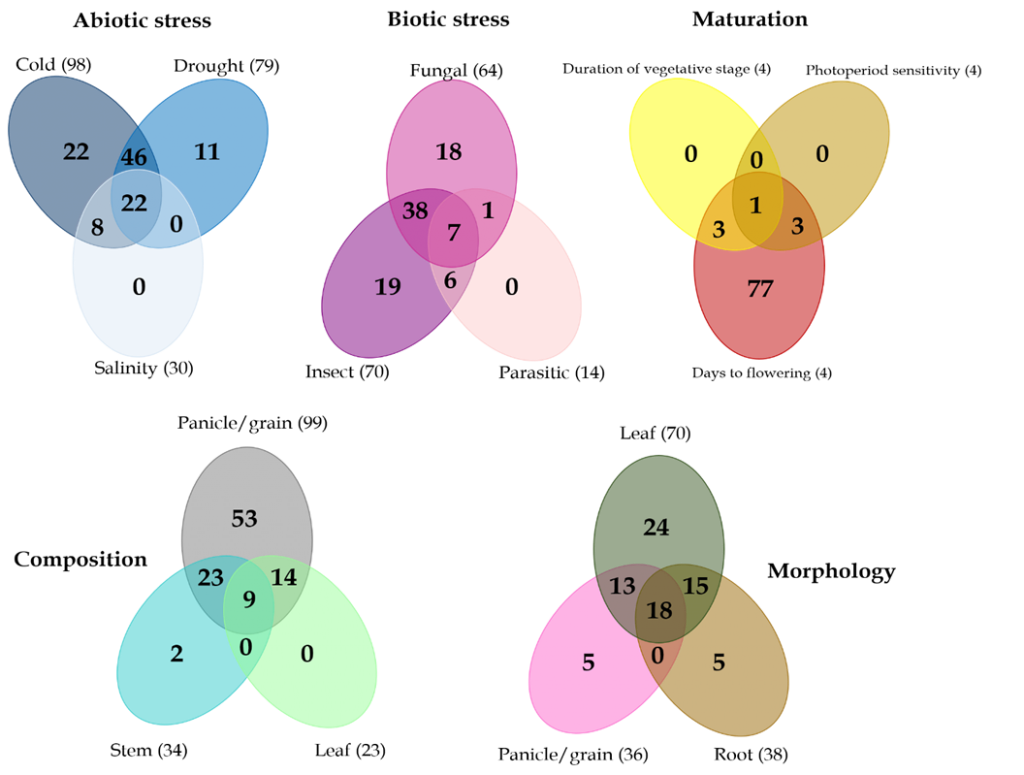The resistance of plants to unfavorable environmental conditions is often controlled or influenced by lectins. These carbohydrate-binding proteins, although initially thought only to be located extracellularly, have since been understood to be present in the intracellular space, interacting with endogenous glycan receptors and assisting in the plant’s adaptation to stressors. Scientists from the Africa City of Technology, the University of Khartoum, and the Medicinal, Aromatic Plants and Traditional Medicine Research Institute (MAPTRI) researched lectin homologs in grain and sweet Sorghum bicolor. The domain architectures, evolutionary relationships, physiochemical characteristics, and gene expansion mechanisms for eight of the known twelve plant lectin families were ascertained. When comparing grain to sweet sorghum lines, Osman et al. identified differences in the lectin homologs in the presence/absence of certain other joint domains like dirigent and nucleotide-binding adaptors shared by APAF-1, R-proteins, and CED-4 (NB-ARC) suggesting neofunctionalization of lectin genes. Overall, lectin putative gene sequences were associated with quantitative trait loci (QTLs) involving panicle/grain composition, leaf morphology, and responses to cold and drought. The co-localization observed among various QTLs suggests pleiotropic effects of the lectin gene in numerous traits and potentially valuable information that can help produce more abiotic stress-resistant sorghum cultivars.
We conducted an in-silico analysis of lectin families from plant and animal sources in sorghum. There is a lack of information on lectins in sorghum compared to other crops like maize and rice, so we aimed to provide a global overview and investigate their correlation to traits related to environmental and climatic stimuli, such as abiotic and biotic stresses. This functional characterization will help us understand the signaling pathways and genes that influence tolerance or sensitivity to these stimuli and related phenotypic traits. – Osman
SorghumBase Examples
A dirigent-JRL VER2 gene from Triticum aestivum which is homologous to Sobic.009G021600.1 and Sobic.005G183600.1 genes (sharing the identity of 40.66 and 39.19%, with both genes, respectively) located in the QTL-days to flowering was reported to mediate flowering upon inducing vernalization of seeds during germination.


Reference
Osman MEM, Dirar AI, Konozy EHE. Genome-wide screening of lectin putative genes from Sorghum bicolor L., distribution in QTLs and probable implications of lectins in abiotic stress tolerance. BMC Plant Biol. 2022 Aug 13;22(1):397. PMID: 35963996. DOI: 10.1186/s12870-022-03792-6. Read more
Related Project Websites
http://www.act.gov.sd/proteomics-and-glycobiology/
The laboratory of proteomics and glycobiology, The biotechnology park, Africa City of Technology (ACT), Sudan, that sponsored this work.
